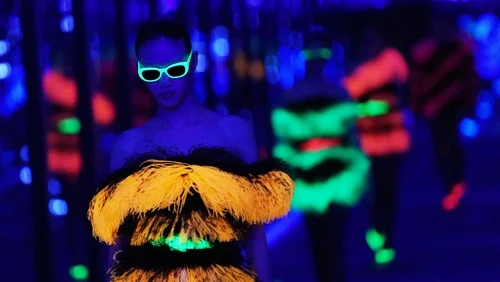Fashion Revolution: How Technology is Transforming the Way We Dress
Changing the Way We Shop: The Impact of Fashion Technology on the Future of Clothing
Fashion has been a constantly evolving industry, with trends coming and going and styles changing over time. Fashion technology is revolutionizing the way we shop for clothes. But in recent years, a new player has entered the scene: technology. The intersection of fashion and technology has led to the creation of new innovations that are changing the way we shop for clothes. From augmented reality to smart fabrics, these new developments are transforming the industry and the way we interact with fashion.
One of the most exciting developments in fashion technology is the use of augmented reality (AR) and virtual reality (VR) in shopping. With AR and VR, customers can experience clothes and accessories in a whole new way. They can try on clothes virtually, see how they look from different angles, and even mix and match different pieces to create an outfit. This technology has the potential to revolutionize the way we shop, making it more immersive, interactive, and personalized.

Another innovation that is changing the way we shop for clothes is 3D printing. This technology allows designers to create complex and intricate designs that would be difficult or impossible to produce using traditional manufacturing methods. 3D printing also allows for customization, as clothes can be printed to fit a customer’s exact measurements. This could lead to a future where every garment is made to order, reducing waste and creating a more sustainable fashion industry.
Smart fabrics are another exciting development in fashion technology. Smart fabrics are fabrics that are embedded with technology, such as sensors or LED lights. Smart fabrics can be used to track movement, monitor vital signs, or even change color and texture. These fabrics contain electronics that can monitor things like heart rate, temperature, and movement. This technology has the potential to revolutionize the way we think about clothing, turning it into a wearable technology that can enhance our lives in a variety of ways. This technology is revolutionizing the way we design and wear clothes. Smart fabrics are also more durable and less prone to wrinkles than traditional fabrics, making them a great choice for busy people who want to look their best. Smart fabrics are also more sustainable, as they can be recycled or reused. For example, smart fabrics could be used to create clothing that helps athletes optimize their performance or clothing that can monitor the health of people with chronic conditions.
The use of artificial intelligence (AI) is also becoming more prevalent in the fashion industry. AI can be used to analyze data on fashion trends and consumer behavior, helping designers and retailers make more informed decisions about what to produce and how to market it. AI-powered personal styling services are also becoming more popular, allowing customers to receive personalized recommendations based on their preferences and body type.
Another development in fashion technology is the use of blockchain to create more transparency and accountability in the industry. Blockchain technology can be used to track the entire lifecycle of a garment, from production to disposal. This can help ensure that workers are treated fairly, materials are sourced sustainably, and the garment is disposed of responsibly.
While these innovations are exciting and have the potential to transform the fashion industry, there are also some challenges that need to be addressed. One of the biggest challenges is the environmental impact of these technologies. For example, 3D printing can require large amounts of energy and produce waste materials, while smart fabrics contain electronics that can be difficult to recycle. It will be important for designers and manufacturers to find ways to mitigate these impacts and create more sustainable practices.
Another challenge is the cost of these technologies. While some of them may become more affordable over time, they are currently out of reach for many designers and retailers. This could lead to a widening gap between those who have access to these technologies and those who do not.
In conclusion, fashion technology is transforming the way we shop for clothes and creating new opportunities for designers, retailers, and consumers. From augmented reality to smart fabrics, these new innovations are changing the way we think about fashion and the possibilities it holds. However, it will be important for the industry to address the challenges that come with these technologies and work towards creating a more sustainable and equitable fashion industry for all.
Image Source : RTE







